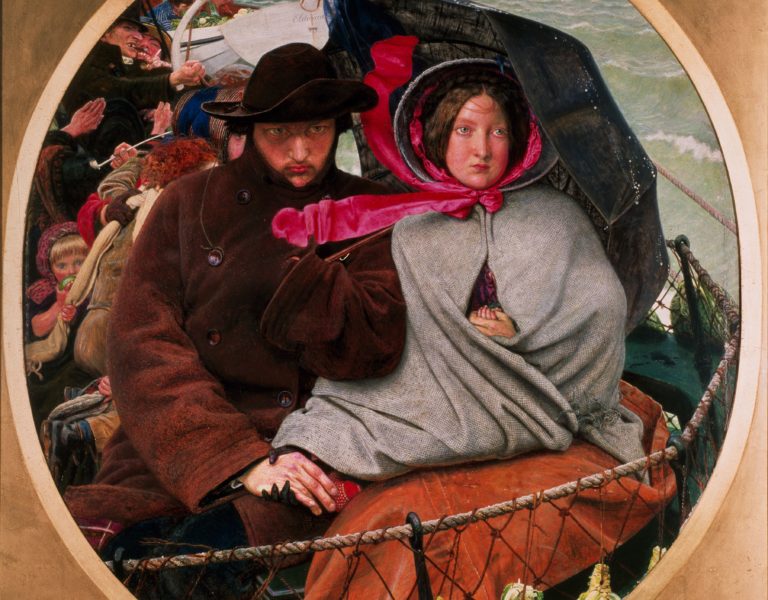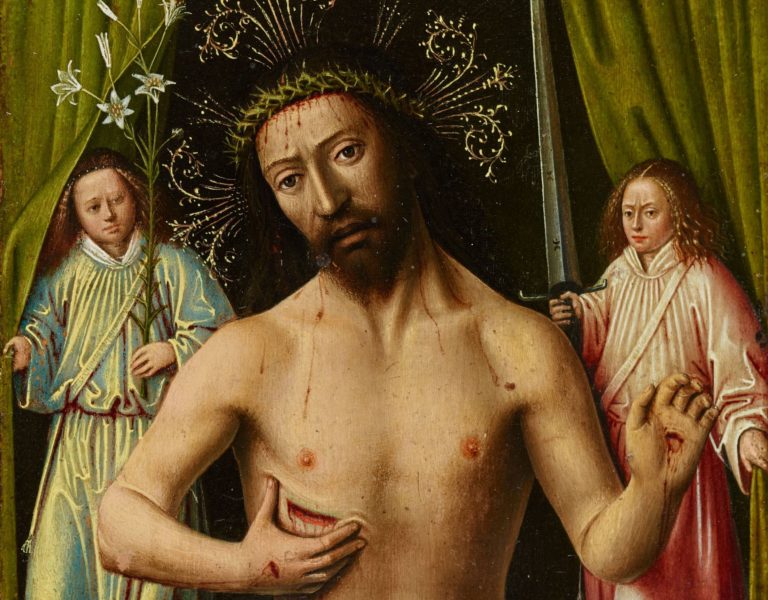Visitors this New Year will be greeted by three of the greatest paintings from the collection usually on display at Birmingham Museum and Art Gallery.
The trio of internationally significant masterpieces have been lent by Birmingham Museums Trust for a two-year period to the Barber – where they will hang among our own collection.
The Last of England, painted in 1855 by the leading Pre-Raphaelite artist Ford Madox Brown, is one of Birmingham’s most iconic cultural treasures, and a masterwork of Victorian painting. A young family are huddling together on an open boat as they depart English shores – represented by the White Cliffs of Dover – for a new life abroad. The subject was inspired by the emigration of a fellow Pre-Raphaelite, the sculptor Thomas Woolner, who set out for Australia’s goldfields in 1852. The models for the main figures were the artist himself and his wife Emma, while tiny hand emerging from the woman’s shawl is that of their own baby. Circular in format, and painted with an almost hallucinatory attention to detail, the effect is like staring through a telescope into a vividly observed moment of reality.
Following the second national lockdown in November 2020, it was announced that the city-centre museum and Council House complex needed completely rewiring – a project expected to continue through to 2023/4, with a partial reopening of the gallery planned for April 2022. For the work to take place, over 36,000 items of Birmingham’s collections have been moved into safe storage.
Curators at the city-centre museum generously suggested that a few of these works could be displayed at the Barber. Alongside The Last of England, two other paintings – which together span 400 years of art history – were selected. The monumental Erminia and the Shepherd, painted around 1620 by leading Bolognese painter Guercino, imagines a dramatic encounter between a young princess and a ragged old shepherd, based on Italian poet Tasso’s epic, Jerusalem Delivered. Contrasting in scale and style is The Man of Sorrows, a tiny panel by the Flemish painter Petrus Christus from around 1450. This visionary image of Christ displaying the wounds of his torture and crucifixion is as intense in its way as the Madox Brown, and would have been used for private prayer and devotion.
The Last of England and Erminia and the Shepherd are now on display in the Barber’s blue and red galleries respectively. The Man of Sorrows is due to be installed shortly in a display case at the end of the red gallery.
Published 4 January 2022.



